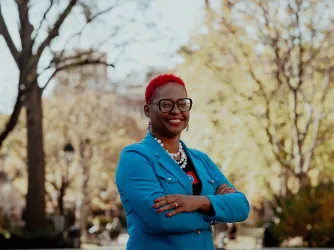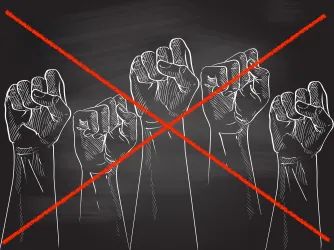Table of Contents
NEW RATINGS: Spotlight on Speech Codes 2022

- National survey of 481 institutions finds 87% of colleges restrict free speech in some capacity
- Progress for public schools: 41% of private schools analyzed earn our worst rating, compared to just 12% of public schools
PHILADELPHIA, Dec. 8, 2021 — A new study by the Foundation for Individual Rights in Education analyzes the written free expression policies at 481 of America’s top colleges and universities. Spotlight on Speech Codes 2022: The State of Free Speech on Our Nation’s Campuses finds that 87% of American colleges maintain policies that restrict — or could too easily be interpreted to restrict — expression.
“Students’ expressive rights shouldn’t be determined by school administrators — they should be determined by the First Amendment,” said Laura Beltz, FIRE’s policy reform director. “College administrators should protect, not endanger, these rights when crafting school policies.”
All of the policies analyzed in the report are accessible in FIRE’s Spotlight Database. FIRE rates schools as “red light,” “yellow light,” or “green light” institutions based on how much speech protected by the First Amendment their policies restrict in a number of categories, including protest, online speech, harassment, and civility.
FIND OUT HOW MUCH PROTECTED SPEECH YOUR COLLEGE RESTRICTS

Almost a fifth of institutions — 18.5% — received an overall red light rating, FIRE’s lowest rating, for maintaining speech codes that both “clearly and substantially” restrict freedom of speech. This reflects a 3-point improvement from last year’s report.
Only 12% of institutions nationwide (58 schools) do not maintain any policies that compromise student expression, earning FIRE’s highest green light rating. This total is up significantly from only 2% in 2009. Meanwhile, the number of institutions earning a yellow light rating is swelling: from 21% in 2009 to 68% today. While less restrictive than red light policies, yellow light policies still prohibit or have an impermissible chilling effect on constitutionally protected speech.
The report also notes that 250 schools in FIRE’s interactive Spotlight database have an IT policy on the books that could be used to restrict protected expression. Of those, 34 are red light policies that substantially restrict expression — which is especially problematic given the continuing reliance of students on technology during the COVID-19 pandemic.
Despite this, public institutions are trending in the right direction. For the first time, more public colleges earn FIRE’s top rating than our lowest rating. While only public institutions are legally bound to uphold students’ First Amendment rights, private institutions are bound by their promises of free expression.
“Any way you slice it, the vast majority of top institutions force students to check some of their speech rights the moment they step onto campus or log onto their classes,” said Beltz. “These restrictions have real consequences that ensnare hundreds of students every year, and chill the expression of many more.”
FIRE stands ready to defend students and faculty members whose rights are threatened on campus. We also welcome college administrators to work with us to reform their institution’s policies.
FIND OUT HOW MUCH PROTECTED SPEECH YOUR SCHOOL RESTRICTS
The Foundation for Individual Rights in Education (FIRE) is a nonpartisan, nonprofit organization dedicated to defending and sustaining the individual rights of students and faculty members at America’s colleges and universities. These rights include freedom of speech, freedom of association, due process, legal equality, religious liberty, and sanctity of conscience — the essential qualities of liberty.
CONTACT:
Katie Kortepeter, Media Relations Associate, FIRE: 215-717-3473; media@thefire.org
Recent Articles
Get the latest free speech news and analysis from FIRE.

LAWSUIT: Tennessee state employee sues after unlawful firing for Charlie Kirk post

FIRE statement on Trump demand for social media history of foreign tourists

Trinity College bans political activism over chalkboard messages
